
Richards-DAR House Museum: A Glimpse into Mobile's Antebellum Past
Explore Mobile's opulent past at the Richards-DAR House Museum, an Italianate masterpiece showcasing antebellum elegance and period furnishings.
The Richards-DAR House Museum, located in Mobile's De Tonti Square Historic District, is an Italianate-style house completed in 1860. It features elaborate cast ironwork, period antiques, and offers a glimpse into 19th-century upper-class life. Operated as a museum by the Daughters of the American Revolution since 1973, it's a testament to the city's rich history and architectural beauty.
A brief summary to Richards-DAR House Museum
- 256 N Joachim St, Mobile, Central Business District, Alabama, 36603, US
- +1251-208-7320
- Visit website
Local tips
- Enjoy complimentary tea and cookies in Caroline's Closet Gift Shop after your tour.
- Check the museum's calendar for special events like Christmas celebrations and garden parties.
- Tours typically last about 45 minutes, so plan your visit accordingly.
Getting There
-
Walking
The Richards-DAR House Museum is located in the De Tonti Square Historic District in downtown Mobile. From Bienville Square, walk north on N Joachim St for approximately 2 blocks. The museum will be on your right. It's easily accessible from most downtown hotels and attractions.
-
Public Transport
The Wave Transit System provides bus service to the Mobile Transit Center, a short walk from the museum. From the Transit Center, head south on Water Street, then turn left onto N Joachim Street. The museum is a short walk down the street. A single ride fare on The Wave is $1.25.
-
Taxi/Ride-Share
Taxis and ride-sharing services like Uber and Lyft are readily available in Mobile. A ride from the Mobile Regional Airport to the Richards-DAR House Museum will typically cost between $20 and $30, depending on traffic and demand.
-
Driving
If driving, navigate to 256 N Joachim St, Mobile, AL 36603. Street parking is available near the museum, but it can be limited. Several parking lots are also located within a few blocks. Parking rates vary, with some lots charging around $4 for 2 hours.
Discover more about Richards-DAR House Museum
Iconic landmarks you can’t miss
Philippi Mastin House
0.4 km
Discover Mobile's architectural heritage at the Philippi Mastin House, a beautifully preserved 1850 townhouse showcasing Greek Revival style and a glimpse into the city's vibrant past.

National African Amer Archives
0.5 km
Explore the rich heritage of African Americans at the National African American Archives in Mobile, AL, a must-visit museum for history enthusiasts.

The Temple Downtown
0.5 km
Discover Mobile's architectural gem, The Temple Downtown: a historic event venue inspired by ancient Egypt, featuring unique Egyptian Revival design.

Downtown Mobile
0.6 km
Explore the vibrant heart of Alabama's oldest city, where history, culture, and modern energy converge in a walkable downtown experience.

Mobile Hidden Figures Historical Marker
0.6 km
Honoring Mobile's African American pioneers and their often-unrecognized contributions to the city's history, located in the heart of downtown.
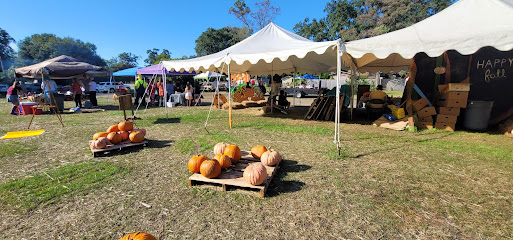
Pincus Building
0.6 km
Discover the historic Pincus Building in Mobile, a Queen Anne-style architectural landmark designed by Rudolph Benz in 1891.

Historic Mobile Bay
0.6 km
Discover centuries of history and natural beauty at Mobile Bay, a captivating destination on Alabama's Gulf Coast with stories etched in its waters.

Bettie Hunter House
0.7 km
Discover the inspiring story of Bettie Hunter, a former slave who became a successful businesswoman in Mobile, Alabama.

Chighizola House
0.7 km
Explore the architectural beauty and historical significance of Chighizola House in Mobile, Alabama, a must-visit for history enthusiasts and urban explorers.

Mobile Historic Development
0.7 km
Preserving Mobile's unique history and architectural heritage for future generations. Explore historic districts and landmarks.

The Admiral
0.8 km
Experience Mobile's history and modern luxury at The Admiral Hotel, a downtown landmark with French-inspired design and upscale amenities.

Visit Mobile Alabama
0.9 km
Discover Mobile, Alabama: History, culture, and Southern charm converge in the Port City. Plan your adventure with Visit Mobile!

Christ Church Cathedral
0.9 km
Experience history and beauty at Mobile's first Episcopal church, featuring stunning architecture and a welcoming community.
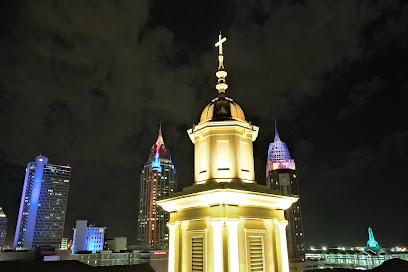
The Pollock-Altmayer House
0.9 km
Explore the Pollock-Altmayer House, an exquisite historical landmark in Mobile, Alabama, showcasing architectural beauty and rich local history.

Ruins of the Second Fort Conde
0.9 km
Explore the foundations of Colonial Mobile at the Ruins of the Second Fort Condé, where French, British, Spanish, and American history converge.

Unmissable attractions to see
Heavenly Metal
0.4 km
Discover Heavenly Metal, a captivating sculpture in Mobile, AL, crafted from reclaimed WWII materials, embodying history and art.

Bienville Square
0.5 km
Explore Mobile's historic Bienville Square, a stunning urban park perfect for relaxation, culture, and vibrant community events.

Dauphin St
0.6 km
Experience the vibrant history, entertainment, and culture of Mobile, Alabama, on lively Dauphin Street in the heart of downtown.

Saenger Theatre Mobile
0.6 km
Discover the historic Saenger Theatre Mobile, where performing arts and live music come to life in a stunning architectural setting.

Cathedral Square
0.6 km
Discover Mobile's historic heart at Cathedral Square: a vibrant park where history, culture, and community converge in a beautiful downtown setting.

Cathedral-Basilica of the Immaculate Conception
0.6 km
Discover the architectural splendor and spiritual serenity of the Cathedral-Basilica of the Immaculate Conception in Mobile, Alabama.
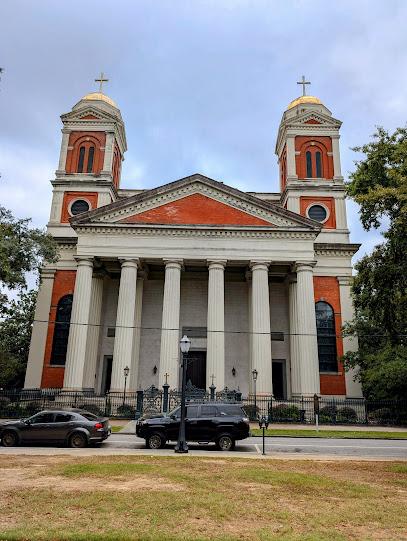
Alabama Contemporary Art Center
0.7 km
Experience thought-provoking contemporary art at the Alabama Contemporary Art Center in the heart of downtown Mobile.

Harriet Tubman Mural Public Art by Apollo
0.7 km
A powerful tribute to Harriet Tubman in Mobile, Alabama, celebrating her legacy of courage, freedom, and the fight for equality. A must-see landmark.

Mobile City Mural
0.8 km
Experience Mobile's vibrant soul through its expansive City Mural, a dynamic reflection of history, culture, and artistic expression in the heart of downtown.

Mobile Carnival Museum
0.8 km
Discover the colorful heritage of Mardi Gras at the Mobile Carnival Museum, where history and festivity come alive in a vibrant celebration of culture.

Mardi Gras Park
0.9 km
Explore Mardi Gras Park, a stunning green oasis in Mobile, Alabama, celebrating the city's rich history and vibrant Mardi Gras traditions.

Exploreum Science Center & Poarch Band of Creek Indians Digital Dome Theater
0.9 km
Exploreum Science Center: A Family-Friendly Science Museum Experience in Mobile, AL with Interactive Exhibits and a Stunning Digital Dome Theater.

Spanish Plaza Park
0.9 km
Explore Spanish Plaza Park, a tranquil escape in Mobile, Alabama, where nature meets culture and serenity awaits at every turn.

History Museum of Mobile
0.9 km
Discover the captivating history of Mobile, Alabama at the History Museum of Mobile, where past and present come alive through engaging exhibits.

Bienville Bites Food Tour
0.9 km
Discover Mobile, Alabama's culinary heritage with a delicious food tour that blends local flavors, history, and culture for an unforgettable experience.

Essential places to dine
Iron Hand Brewing, LLC
0.1 km
Discover the vibrant flavors of Mobile at Iron Hand Brewing – where craft beer meets culinary creativity in an inviting brewpub atmosphere.

The Blind Mule
0.5 km
Discover vibrant flavors at The Blind Mule, where Southern hospitality meets innovative cuisine in Mobile's bustling dining scene.

Bob's Downtown Restaurant
0.5 km
Experience Southern hospitality at Bob's Downtown Restaurant—Mobile's favorite breakfast spot serving delicious dishes in a vibrant atmosphere.

Ruby Slipper
0.5 km
Experience the best of Southern brunch at Ruby Slipper in Mobile - where classic flavors meet modern twists in a cozy atmosphere.

Noja
0.5 km
Experience an exquisite fusion of Asian and Mediterranean cuisines at Noja in Mobile – where every dish tells a story.

T.P. Crockmiers
0.5 km
Discover delicious grilled flavors at T.P. Crockmiers, a top American restaurant in Mobile's bustling downtown area.

Mama's On Dauphin
0.5 km
Experience the heart of Southern hospitality with delicious brunch offerings at Mama's On Dauphin in Mobile, Alabama.

Dauphin’s Casual Fine-Dining
0.5 km
Experience the perfect blend of seafood and steak at Dauphin's Casual Fine-Dining in Mobile, Alabama - where casual elegance meets culinary excellence.

Debris Po-Boys & Drinks
0.5 km
Experience authentic Southern cuisine at Debris Po-Boys & Drinks - where every bite tells a story of flavor and tradition.

Wet Willie's
0.5 km
Experience Mobile's vibrant nightlife at Wet Willie's – where frozen drinks meet delicious bites in an energetic atmosphere.

Spot of Tea
0.6 km
Discover Spot of Tea: A delightful American eatery serving scrumptious breakfast and brunch in Mobile's vibrant downtown.

Loda Bier Garten
0.6 km
Discover Loda Bier Garten in Mobile: Where gourmet burgers meet a vibrant pub atmosphere amidst Southern hospitality.

Dumbwaiter Restaurant
0.6 km
Experience culinary artistry at Dumbwaiter Restaurant in Mobile, AL – where exquisite flavors meet elegant ambiance.

Trellis Room
0.6 km
Experience Southern hospitality at Trellis Room - Mobile's charming diner serving classic comfort food in an inviting setting.

The Noble South
0.6 km
Experience innovative Southern cuisine at The Noble South, where tradition meets modernity in Mobile's culinary scene.

Markets, malls and hidden boutiques
Do Goods Mercantile Company
0.4 km
Experience the charm of Mobile, Alabama at Do Goods Mercantile Company, your destination for unique local goods and artisanal treasures.

Bienville Souvenir & Gifts
0.5 km
Explore the essence of Mobile at Bienville Souvenir & Gifts, where unique local treasures await every traveler.

Urban Emporium LLC
0.5 km
Explore the charm of Mobile with unique gifts and fashion at Urban Emporium, your go-to boutique in Alabama's vibrant Central Business District.

A & M Peanut Shop
0.6 km
Experience the sweet charm of A & M Peanut Shop in Mobile, Alabama, where delectable peanut treats and nostalgic candies await every visitor.
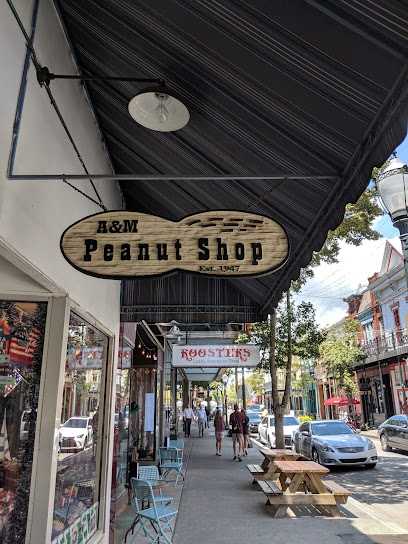
Mariposa Boutique LLC
0.6 km
Explore Mariposa Boutique LLC: A unique gift shop in Mobile, AL offering stylish women's clothing and accessories that capture Southern charm.

The Haunted Book Shop
0.6 km
Explore the enchanting world of literature and ghostly tales at The Haunted Book Shop in Mobile, Alabama, a unique bookstore with character.
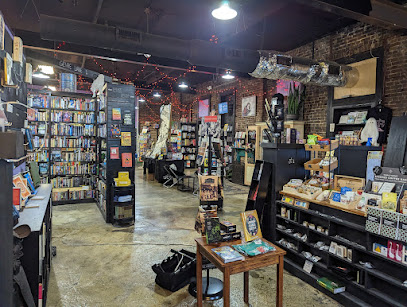
Mardi Gras and More Gift Shop
0.7 km
Discover a unique blend of local culture and festive spirit at Mardi Gras and More Gift Shop, Mobile's premier destination for authentic souvenirs.

Olde Mobile Antiques Gallery & Estate Sales
0.8 km
Explore Olde Mobile Antiques Gallery & Estate Sales: A treasure trove of antique furniture, collectibles, and rare books in the heart of Mobile, Alabama.

Atchison Home
1.4 km
Explore Atchison Home, a hidden gem in Mobile, Alabama, offering exquisite antique furniture and unique decor to elevate your home.

Samagree
2.4 km
Explore Samagree in Mobile, AL, where timeless antiques and artistic handicrafts await, offering unique treasures for every collector and visitor.

Battleship Gift Shop
3.3 km
Discover unique gifts and memorabilia at the Battleship Gift Shop, where naval history meets delightful shopping in Mobile, Alabama.
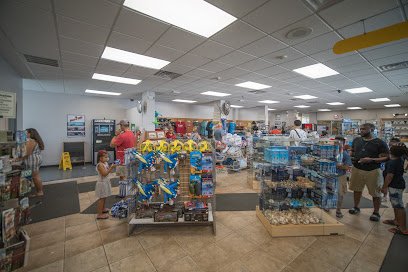
Paul's Trading Post
3.3 km
Explore Mobile's vibrant music scene at Paul's Trading Post, a beloved record store and consignment shop brimming with vintage finds and local charm.
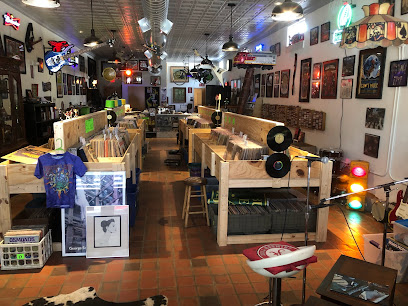
Gaillard's Gift Shop at Mobile Infirmary
3.3 km
Experience the charm of Mobile at Gaillard's Gift Shop – a treasure trove of unique gifts reflecting local artistry and culture.

Joyous Goat Coffee & Tea Gift Shop
3.5 km
Experience the best of Mobile at Joyous Goat Coffee & Tea Gift Shop, where quality beverages meet charming local gifts in a cozy atmosphere.

Yellow House Antiques
4.2 km
Explore Yellow House Antiques in Mobile, AL – a haven for antique lovers with unique vintage furniture and exceptional restoration services.

Essential bars & hidden hideouts
The Stables Bar
0.5 km
Experience the ultimate sports bar atmosphere at The Stables Bar in Mobile, where great food and thrilling games come together for an unforgettable night.

Bar IX / Bar Nine
0.5 km
Discover the lively ambiance and diverse drink selection at Bar IX in Mobile, Alabama, a must-visit destination for nightlife enthusiasts.

Brickyard
0.5 km
Experience the lively nightlife of Mobile at Brickyard, a vibrant bar offering craft cocktails and a welcoming atmosphere for all.

Hayley's Bar
0.6 km
Discover the lively spirit of Hayley's Bar in Mobile, AL, where great drinks, friendly faces, and unforgettable memories await.

Royal Street Tavern
0.6 km
Discover the lively ambiance of Royal Street Tavern, a must-visit bar in Mobile, Alabama, known for its craft cocktails and vibrant local culture.

The Electric Piano Parlor
0.6 km
Experience the vibrant nightlife at The Electric Piano Parlor in Mobile, where live music meets a cozy bar atmosphere, perfect for all music lovers.

The Haberdasher
0.6 km
Experience the vibrant nightlife of Mobile, Alabama at The Haberdasher, where expertly crafted cocktails and a cozy atmosphere await.

Alchemy Tavern
0.6 km
Experience the vibrant nightlife of Mobile at Alchemy Tavern, where craft drinks and a welcoming atmosphere await you.

Flip Side Bar & Patio
0.7 km
Discover Flip Side Bar & Patio - Mobile's lively spot for drinks, delicious bites, and vibrant atmosphere in the heart of Alabama.

Cedar Street Social
0.7 km
Discover Cedar Street Social, Mobile's vibrant lounge that offers expertly crafted cocktails and a lively atmosphere in the heart of the city.

the Outsider • sports lounge
0.8 km
Experience the thrill of game day at The Outsider Sports Lounge, where great food, drinks, and an electric atmosphere await in Mobile, Alabama.

VEETS
0.8 km
Discover the lively VEETS in Mobile, where exceptional cocktails and live music create an unforgettable nightlife experience.

Kazoola Eatery & Entertainment
0.8 km
Discover the lively atmosphere at Kazoola Eatery & Entertainment, a top bar in Mobile, Alabama, offering great food, drinks, and vibrant entertainment.
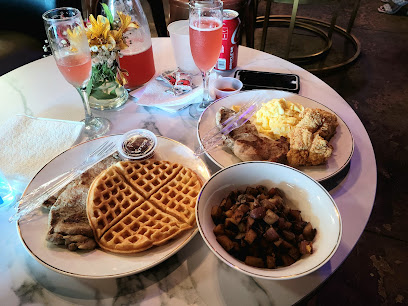
O'Daly's Irish Pub
0.8 km
Discover the charm of Ireland at O'Daly's Irish Pub in Mobile, where delicious food, drinks, and live entertainment await.

Draft Picks Tap Room
0.8 km
Join the excitement at Draft Picks Tap Room, Mobile's favorite sports bar offering great food, drinks, and lively atmosphere for sports enthusiasts.




